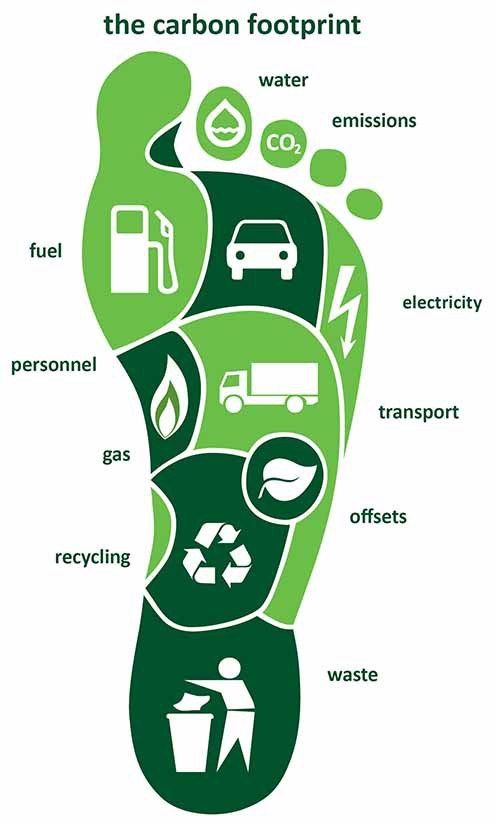The measurement of a company's or organisation's total greenhouse gas (GHG) emissions, both directly and indirectly, is known as its "carbon footprint."
Considering that the UK has pledged to achieving net-zero greenhouse gas emissions by the year 2050, determining your organization's carbon footprint should be a top priority. Calculating your carbon footprint is a crucial first step in putting a plan in place to reduce emissions, and it also gives you a competitive edge in a market that is changing quickly.
Emission Reduction
It is a crucial first step in putting a plan in place to reduce emissions.

Competitive Advantage
Calculating your carbon footprint also gives you a competitive edge in a market that is changing quickly.
Identify Inefficiency
Carbon footprinting can show you where your company is inefficient.
Carbon Footprint Features
Carbon footprints are made up of emissions from three different scopes, according to the WBCSD/WRI Greenhouse Gas Protocol:
Direct GHG emissions
Direct greenhouse gas emissions from sources within the organization's ownership or control.
Indirect GHG emissions
Indirect GHG emissions that a business produces.
All Indirect emissions
Any emissions for which a company is indirectly liable.
FAQs
- How can the UK lessen its carbon footprint at work?
-
Your company's carbon footprint can be reduced by employing long-term cleaning solutions, recycling garbage, using heat-free printers, and routinely maintaining office equipment. Reducing the usage of nonbiodegradable materials, such as plastic, is one of the easiest ways to lower carbon footprints.
- Why is it vital to calculate your carbon footprint?
-
A crucial first step for any firm looking to contribute to the solution to the climate crisis is to calculate its carbon footprint. Since so many small firms have already adopted this strategy, joining them is gradually becoming a simple choice for you. Going green is highly encouraged due of the reputational advantages it offers to potential investors, future staff, and new clients. Calculating your carbon footprint is also an intelligent way to manage your risk for potential law changes, supply chain disruptions, and increases in the cost of carbon. Calculating your carbon footprint and reducing it can help your organisation save money even if the price of carbon stays the same.
- Net zero: What is it?
-
Knowing your carbon footprint will help you find opportunities to minimise it and go toward net zero. Your carbon footprint is zero when you are at net zero. By reducing and eradicating greenhouse gas emissions and, if required, compensating any that remain, net zero can be achieved. The Climate Change Act, which was brought into law in the UK, stipulates that the nation will be net zero by 2050. Scotland has pledged to achieve net zero status by 2045.








